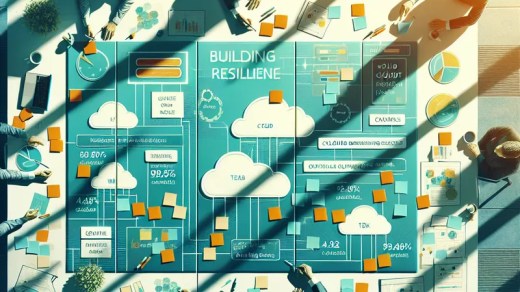Whether we’re collaborating with international teams or translating technical documents, DeepL is transforming how we bridge language barriers with remarkable precision and efficiency.
Breaking Down the Barriers
DeepL’s translation prowess comes from its sophisticated neural network architecture, designed to grasp the nuances and context of different languages. Unlike traditional translation tools, DeepL leverages a deep learning approach to understand idiomatic expressions and cultural references, making translations more natural and accurate. This is a game-changer for DevOps teams who need precise and contextual translations to ensure seamless operations across global projects.
Imagine you’re managing a project that involves developers from Germany, France, and Japan. Miscommunication can lead to costly delays and errors. DeepL steps in as an intermediary, translating documentation and communication in real-time, ensuring everyone is on the same page. This not only enhances productivity but also fosters a more inclusive and collaborative environment.
A New Era of AI-Driven Translation
The real magic of DeepL lies in its adaptability. It continuously learns and improves from vast amounts of multilingual data, refining its algorithms to deliver increasingly accurate translations. This continuous improvement is akin to our DevOps philosophy of continuous integration and continuous delivery (CI/CD), where we constantly refine and enhance our processes to achieve optimal performance.
Moreover, DeepL offers an API that can be integrated into various applications and platforms, making it a versatile tool for any tech stack. Whether it’s integrating with our CI/CD pipelines or embedding it into our project management tools, DeepL’s flexibility ensures that it can be seamlessly woven into our existing workflows. This adaptability not only saves time but also reduces the cognitive load on our teams, allowing them to focus on what they do best—innovating and delivering top-notch solutions.
Enhancing Global Collaboration
For DevOps teams, the ability to communicate effectively across different languages is invaluable. DeepL’s high accuracy and contextual understanding enable us to convey complex technical concepts clearly, minimizing the risk of misinterpretation. This is particularly important in cybersecurity, where precise communication is crucial for maintaining robust security protocols and responding to threats swiftly.
DeepL’s impact extends beyond translations of everyday language. It can handle the intricate technical jargon and specific terminologies prevalent in the DevOps and IT world. This capability ensures that even the most detailed and technical documents are accurately translated, preserving the original meaning and intent.
The Technical Edge of DeepL
DeepL’s technology hinges on its deep neural networks, which are trained on a massive dataset comprising billions of translated texts. These neural networks utilize transformer models, a type of deep learning model that excels in understanding context and semantics. Unlike traditional machine translation systems that might translate text in a more linear or word-by-word fashion, DeepL’s transformer models consider entire sentences and paragraphs, capturing the intended meaning more effectively.
The significance of this for DevOps cannot be overstated. Consider the translation of a complex technical document such as a software architecture specification or a detailed runbook for incident management. Such documents are replete with domain-specific terminology and require a nuanced understanding of context. DeepL’s advanced algorithms ensure that these translations maintain their technical accuracy and coherence, facilitating smoother international collaboration.
Integration with DevOps Tools
One of the most compelling aspects of DeepL is its ability to integrate seamlessly with a variety of DevOps tools. Through its API, DeepL can be incorporated into continuous integration/continuous deployment (CI/CD) pipelines, chat platforms, project management tools, and more. This means that teams can leverage DeepL’s translation capabilities without disrupting their existing workflows.
For example, integrating DeepL with a CI/CD pipeline could automate the translation of deployment logs, error messages, and documentation into multiple languages. This automation ensures that team members who speak different languages can access critical information promptly, reducing downtime and speeding up the resolution of issues. Similarly, integrating DeepL with project management tools like Jira or Asana can ensure that tasks, comments, and updates are accessible to all team members, regardless of their language.
Real-World Applications and Case Studies
To illustrate the practical benefits of DeepL, let’s look at some real-world applications and case studies. Many companies have successfully integrated DeepL into their operations, resulting in improved communication and efficiency.
One notable example is a multinational software development firm that implemented DeepL into their development process. They found that the tool significantly reduced the time spent on translating technical documentation, allowing their developers to focus more on coding and less on language-related issues. By ensuring that all team members had access to the same information in their native languages, they were able to speed up their development cycles and reduce errors.
Another case study involves a global IT services company that used DeepL to translate customer support tickets and knowledge base articles. This integration allowed their support team to provide faster and more accurate assistance to customers around the world. As a result, customer satisfaction scores improved, and the support team’s efficiency increased.
Security and Compliance Considerations
While the benefits of DeepL are clear, it’s also important to consider security and compliance, especially for organizations handling sensitive data. DeepL takes data privacy seriously and offers robust security measures to protect user data. For enterprises with stringent compliance requirements, DeepL provides options for on-premises deployment, ensuring that data does not leave the organization’s secure environment.
In addition to on-premises deployment, DeepL also complies with major data protection regulations, including GDPR. This compliance is critical for organizations operating in regions with strict data privacy laws. By adhering to these regulations, DeepL ensures that its users can confidently leverage its translation capabilities without compromising on data security.
The Future of AI Translation
As we look to the future, the potential for AI-driven translation tools like DeepL is immense. The ongoing advancements in natural language processing (NLP) and machine learning will continue to enhance the accuracy and capabilities of these tools. For DevOps teams, this means even more seamless communication and collaboration across global projects.
One exciting development is the potential for real-time translation during live conversations and meetings. Imagine a scenario where team members speaking different languages can participate in a video conference, and DeepL translates the conversation in real-time. This capability would further break down language barriers, enabling truly global collaboration without the need for a common language.
Additionally, as AI models become more sophisticated, they can handle even more complex and nuanced translations. This progress will particularly benefit fields like legal, medical, and technical translations, where precision and accuracy are paramount.
Embracing AI Translation for a Connected Future
DeepL’s advanced AI-driven translation capabilities offer a powerful solution for bridging language barriers, enhancing global collaboration, and improving operational efficiency. By integrating DeepL into our workflows, we can ensure that our teams are equipped with the tools to communicate effectively, regardless of language differences.



















